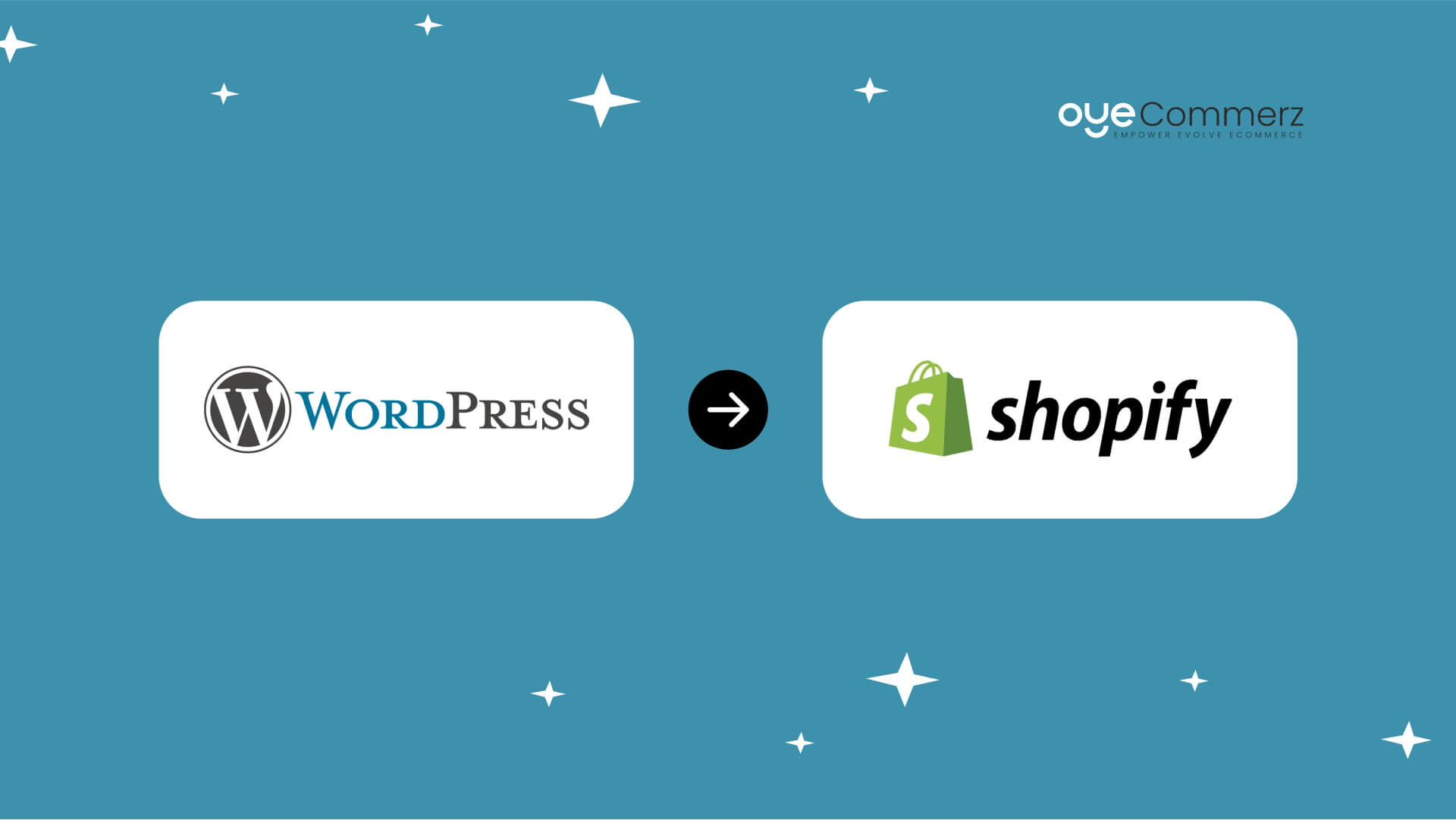Transitioning from WP to Shopify is an exciting step toward optimizing your e-commerce processes. As companies expand, selecting a platform that aligns with scalability, UX, and customization is essential. Shopify is widely recognized as a preferred choice for online merchants, providing superior flexibility, data protection, and ease of use. In this guide, we will delve into why this migration is a game-changer, highlight the benefits, and provide actionable steps to facilitate a seamless move.
1. Why Migrate from WP to Shopify?
WordPress, paired with WooCommerce, has served countless e-commerce platforms. However, as businesses scale, issues like reliance on plugins, security vulnerabilities, and technical complexities often obstruct progress. Shopify, specifically created for e-commerce, addresses these concerns with an all-in-one, intuitive platform. Statistics back this transition—Shopify powers over 4.4 million websites worldwide, with a reported 10% increase in sales conversion rates for numerous merchants after migration.
2. Key Benefits of Shopify for E-commerce Success
Shopify’s powerful platform is tailored for expanding brands. Its notable features are:
- Seamless Customization: Shopify provides over 80 expertly crafted themes.
- Integrated Tools: Features like Shopify Payments and built-in SEO streamline operations.
- International Expansion: Currency versatility and regional customization empower businesses to expand internationally.
Additionally, Shopify boasts an availability percentage of 99.98%, guaranteeing your website remains accessible.
3. Preparing for WordPress to Shopify Migration
Prior to starting the migration process, assess your existing setup. Review product data, client information, and search engine rankings. Tools like Shopify’s Migration Kit or external tools can simplify this process. Create a comprehensive plan, making sure all assets—item details, images, and articles—are ready for seamless import.
4. Data Migration: A Critical Step
Data migration forms the foundation for a successful transition. When moving from WordPress to Shopify, focus on:
- Product Information: SKU, descriptions, and groupings.
- Customer Data: Emails, order history, and custom fields.
- Search Engine Considerations: Preserve meta tags, URLs, and redirects to avoid SEO losses.
Leverage apps like LitExtension to facilitate seamless migration while minimizing errors.
5. Customizing Your Shopify Store
Post-migration, customizing your Shopify store ensures it aligns with your business identity. Utilize Shopify’s intuitive page builder to create layouts with ease. Shopify's templates are mobile-responsive, providing a seamless user experience across platforms—a critical factor, given 74% of e-commerce traffic is generated by mobile visitors.
6. How to Protect Your SEO Rankings When Switching Platforms
Search engine optimization is crucial for maintaining your visibility during migration. Shopify excels in SEO with organized link formatting, preloaded features, and smooth content management. Make sure you:
- Set up URL forwarding for existing links.
- Optimize new pages with targeted phrases.
- Leverage plugins like Plug in SEO to track analytics after the switch.
7. Post-Migration Testing
Once the migration is complete, run detailed checks.
Review: - Page load times (Shopify delivers faster speeds compared to WP).
- Payment integration reliability and transaction flow.
- Mobile responsiveness.
Quality assurance ensures your store provides a seamless shopping journey from the start.
8. Real-Life Success Story
An example of effective platform switching is Gymshark, a sportswear company that transitioned to Shopify. Post-migration, the company experienced a 60% increase in mobile sales and significantly lowered site downtime. This highlights the capabilities of Shopify in Migration for WordPress websites driving online business success.
9. Challenges and Solutions
Migration is not without obstacles, such as information accuracy and adjusting tailored features. However, Shopify’s extensive assistance and third-party experts simplify the process. Partnering with experienced Shopify developers ensures a smooth transition.
10. Starting Your Journey with Shopify
Switching from WordPress to Shopify marks a forward-thinking decision to e-commerce. By addressing scalability, simplifying management, and enhancing the customer experience, Shopify empowers businesses to succeed in challenging industries.
Conclusion
Switching from WordPress to Shopify offers a smart solution that Migrating online stores to Shopify can greatly enhance your online business performance. With a well-structured strategy, the right tools, and expert support, you can achieve new growth opportunities.
Ready to make the leap? Let’s discuss how our Shopify migration services can transform your e-commerce platform. Get in touch today, or ask yourself: Is it time to seize Shopify’s advantages for your store?

 Jake Lloyd Then & Now!
Jake Lloyd Then & Now! Luke Perry Then & Now!
Luke Perry Then & Now! Marques Houston Then & Now!
Marques Houston Then & Now! Mike Vitar Then & Now!
Mike Vitar Then & Now! Jane Carrey Then & Now!
Jane Carrey Then & Now!